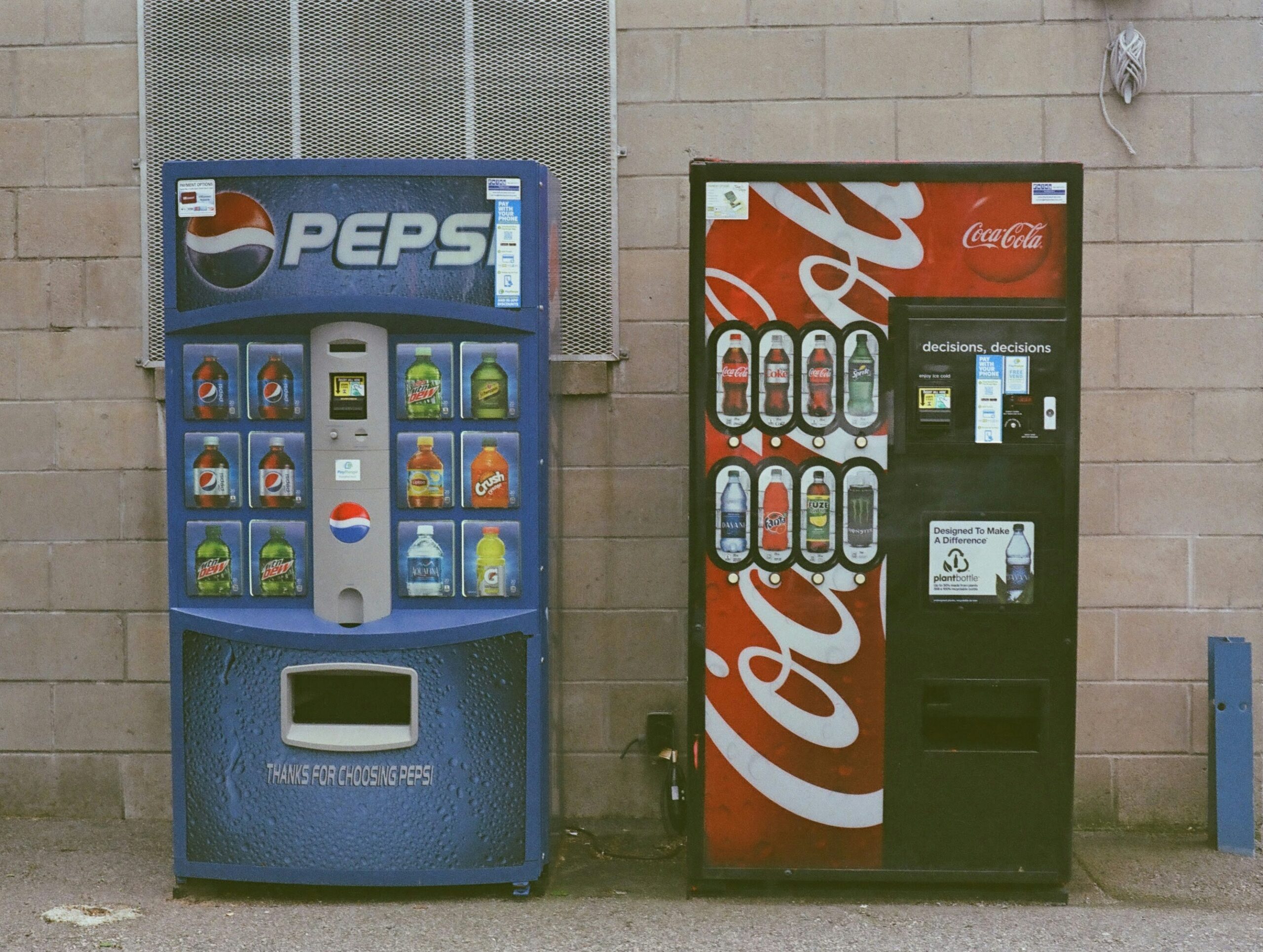The Greatest Business Rivalries – Part 1
Business rivalries have shaped industries and defined success stories. As a matter of fact, these competitive stories, marked by intense rivalries, reflect the essence of entrepreneurship and the pursuit of excellence. In other words, the landscape of business rivalries offers fascinating into business with strategic moves, innovation, and corporate manoeuvring.
Not to mention, iconic rivalries between industry giants have often been catalysts for ground-breaking advancements. For instance, in the light of the technology sector, the battles between tech titans have driven innovation at an unprecedented pace. In addition, examining these rivalries offers insights into the competitive forces that have, altogether, shaped the business world. Whether it’s in the automotive, technology, or retail sectors, the greatest business rivalries have, without a doubt, left an indelible mark on the global economic landscape.
However, the impact of business rivalries extends beyond the companies involved; it influences consumer choices and market dynamics. Still, the competitive spirit that fuels these rivalries often results in improved products and services for consumers. On one hand, it’s a testament to the power of healthy competition in driving progress. On the other hand, the strategies employed in these rivalries showcase the diverse approaches businesses take to gain a competitive edge. In that case, exploring these rivalries provides valuable lessons for aspiring entrepreneurs and established businesses alike.
Apple vs. Microsoft
In the world of business rivalries, few are as iconic as the battle between Apple and Microsoft. Their founders Steve Jobs and Bill Gates undoubtedly had one of the most fascinating business rivalries of all time. As a matter of fact, these tech giants have shaped the tech landscape for decades. Apple’s focus on design and user experience, in other words, stands in contrast to Microsoft’s emphasis on software and enterprise solutions. Not to mention, their competition has driven innovations like personal computing, smartphones, and operating systems. For instance, the introduction of Windows and MacOS marked a turning point in the computing industry. In addition, their rivalry has led to marked improvements in products and services, benefiting consumers altogether.
Amazon vs. Alibaba
In the ever-expanding realm of e-commerce, the rivalry between Amazon and Alibaba takes centre stage and in a way shows us the vast differences between US and Chinese businesses. Markedly, these global giants have transformed the way people shop online. Amazon’s dominance in North America and Europe contrasts with Alibaba’s stronghold in Asia. Without a doubt, their rivalry has propelled the growth of online retail on a global scale. For instance, Amazon’s Prime service and Alibaba’s Singles Day have become cultural phenomena. In the light of their competition, both companies continually seek to expand their reach and services. In addition, the battle for supremacy in cloud computing further intensifies this fierce rivalry.
Ford vs. General Motors
Steering into the automotive industry, the rivalry between Ford and General Motors is a classic example of competition driving innovation. Puns intended. On one hand, Ford revolutionised mass production with the assembly line in 1913. On the other hand, General Motors diversified its product offerings and brands. In that case, the rivalry shaped the modern automobile landscape. For instance, their competition led to advancements such as electric vehicles and safety features. Still, both companies continue to be very different and adapt to evolving consumer preferences and technological advancements in their own ways.
Coca-Cola vs. Pepsi
In the 1970s and 80s, the beverage industry witnessed one of the longest-standing and iconic business rivalries – Coca-Cola vs. Pepsi, the Cola Wars. In the light of consumer preferences, both companies have continually innovated their product offerings and marketing strategies. However, Pepsi has carved a niche with its focus on youthfulness and celebrity endorsements. Conversely, Coca-Cola has maintained its classic image while expanding its portfolio. In addition, their competition has sparked numerous marketing campaigns and product launches. Equally, their rivalry demonstrates the power of branding and the impact it has on consumer loyalty.
Boeing vs. Airbus
In the aviation industry, the rivalry between Boeing and Airbus has reached new heights. As a matter of fact, these aerospace giants compete for dominance in commercial aircraft manufacturing. On one hand, Boeing’s focus on innovation and efficiency is evident in its popular 737 and 787 models. On the other hand, Airbus emphasises capacity and fuel efficiency with its A320 and A350 series. In addition, this competition has led to advancements in aircraft technology and design. Still, their rivalry reflects the global demand for air travel and the strategic decisions made by airlines around the world. Unfortunately, Boeing’s recent shortcomings and consequent accidents could have a long-term negative effect on the business.
Google vs. Bing
In the digital landscape, the business rivalry between Google and Bing is a battle for search engine supremacy. Google’s dominance is evident in its global market share and innovative algorithms. While not being the first search engine, Google became the leading player in the field quickly in the late 90s, changing the way people use the web, and has remained top-dog ever since. However, Microsoft’s Bing continues to challenge this supremacy with a focus on user experience and integration with other Microsoft products. In that case, both search engines continually enhance their algorithms and features to provide better results for users. For instance, Google’s PageRank and Bing’s emphasis on visual search represent distinctive approaches to the same goal. Altogether, their competition has driven improvements in search technology, benefiting users worldwide. While Bing may improve its standing by using features from Microsofts’s cooperation with OpenAI, its market share remains rather low at around 10%.
Facebook vs. Twitter (now known as X)
The rivalry between Facebook and Twitter showcases different approaches to user engagement and content sharing. On one hand, Facebook emphasises personal connections, multimedia sharing, and a comprehensive platform with its acquisitions of Instagram and WhatsApp. On the other hand, Twitter focuses on real-time information, brevity, and public discourse. In addition, their competition has led to features like live streaming, stories, and targeted advertising. However, their platforms serve diverse user needs, reflecting the evolving landscape of social media. Since Elon Musk took over Twitter in 2022, the rivalry has heated up even more, with Musk and Facebook-CEO Mark Zuckerberg frequently attacking each other.
Walmart vs. Amazon
The clash between Walmart and Amazon in the retail sector exemplifies the shift from traditional brick-and-mortar stores to e-commerce dominance. On one hand, Walmart’s extensive physical presence and commitment to low prices have been its strengths. On the other hand, Amazon’s online platform and focus on convenience and innovation have propelled its global reach. In addition, their rivalry has accelerated the integration of online and offline retail strategies. Regardless, both giants continuously invest in technology, logistics, and acquisitions to stay ahead in the evolving retail landscape. In that case, their competition has reshaped consumer expectations and the dynamics of the retail industry.
Samsung vs. Apple
Apple is the only company featuring on the list twice, and the rivalry between Samsung and Apple has been at the forefront of the smartphone industry. As a matter of fact, these giants compete fiercely for market share, innovation, and brand loyalty. Samsung’s diverse product range and focus on hardware innovation contrast with Apple’s seamless integration of hardware and software. Not to mention, their competition has led to the evolution of smartphones, marked by features like touchscreens, cameras, and biometric security. For instance, the Galaxy vs. iPhone rivalry symbolises the ongoing battle for supremacy in the lucrative smartphone market. In addition, their global influence has shaped the preferences and expectations of smartphone users worldwide.
Final Thoughts
In the dynamic landscape of business rivalries, one cannot overlook their profound impact on industries and consumers. Another key point is that these competitions drive innovation, pushing companies to continually enhance products and services. As a matter of fact, business rivalries fuel economic growth and contribute to market evolution. In other words, they serve as catalysts for positive change, fostering creativity and responsiveness to consumer needs.
Not to mention, the lessons learned from these rivalries extend beyond boardrooms, offering insights into strategic management and adaptability. For instance, the timeless clash between industry giants showcases the significance of agility and foresight in an ever-changing business environment. In addition, the influence of business rivalries is altogether undeniable, shaping consumer choices and industry trends. Without a doubt, their impact is marked not only by corporate success but also by the broader narrative of market dynamics.
In the light of these rivalries, businesses can draw inspiration for their own growth strategies and resilience. With attention to the lessons learned, they can navigate challenges and position themselves for success. Equally, embracing healthy competition can lead to ground-breaking advancements and unparalleled achievements. Regardless of the industry, the story of business rivalries speaks volumes about the enduring pursuit of excellence. In that case, understanding their nuances is essential for organisations aiming to thrive in today’s competitive landscape.
Written with support from ChatGPT by OpenAI

